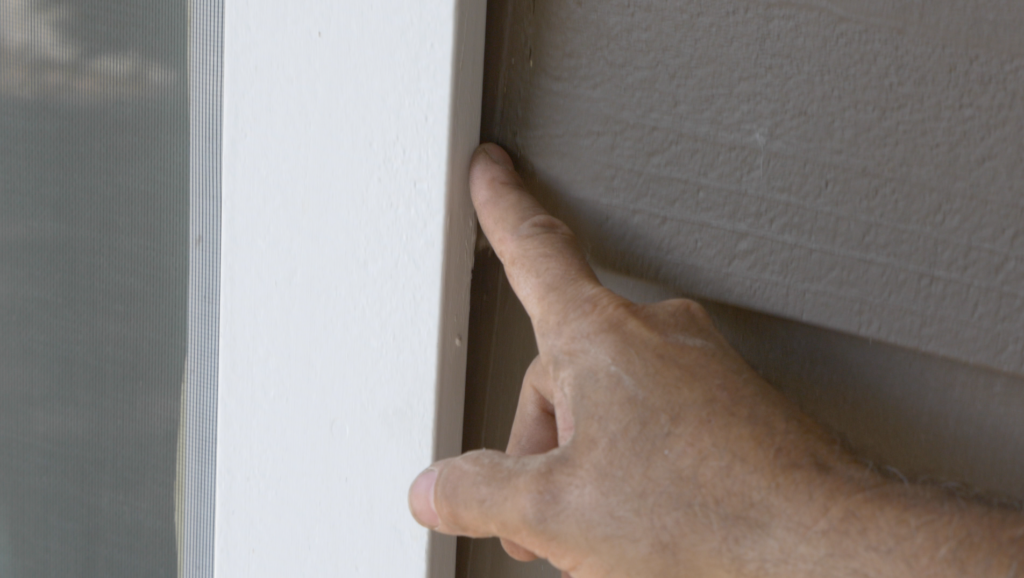Following a longstanding drought, a major rainstorm in late October blindsided the Bay Area, with some regions receiving seven to 10 inches of rain in a single day. During the storm, many residents discovered they had water leaking from their roofs and windows—an occurrence that seemed unthinkable just a week earlier. This event highlights the importance of waterproofing one’s home exterior, even during interminable periods of dry climate. After all, you never know when the weather might turn, and as the saying goes, “when it rains, it pours.”
There are several ways for water to penetrate a home exterior, so it’s important to address waterproofing from multiple angles. Here are four steps you should take:
1. Seal gaps and cracks. Most homes (especially older ones) contain gaps and cracks in exterior elements like siding panels or door and window trim. These gaps and cracks leave the home’s substructure vulnerable to water intrusion, which can lead to leaks and dry rot. To prevent this, go around your home and seal all visible gaps and cracks with a paintable latex caulk that’s rated for exterior use. For any gaps larger than a quarter-inch in width, use a plastic foam filler to ensure a thorough seal.

One important exterior waterproofing measure is sealing gaps between siding and door/window trim. Photo: Willow Creek Construction ©2021
2. Repaint failing paint. Paint isn’t just for looks—it also seals your home’s wood siding against moisture intrusion. If your exterior paint is in poor condition, consider having it repainted before the rainy season sets in. In general, it’s best to take a preventative approach to repainting your home. Rather than waiting for the paint to break down, plan to repaint at a predetermined interval that will provide an ample window of performance without creating an increased risk for water intrusion issues.
3. Inspect and reseal roof waterproofing components. A roof contains several ventilation pipes and other apertures, all of which are sealed to prevent water from getting into the gaps and leaking into the attic. However, many homeowners forget that sun exposure causes rubber collars, caulking and other waterproofing materials to erode at an accelerated rate. That’s why it’s important to have your roof inspected regularly to verify these materials are in good repair. It doesn’t cost much to replace a rubber pipe jack collar or reapply some caulking on your roof, but the price of neglecting these measures can be exorbitant.
4. Clean areas that are prone to clogging. Along with repainting and resealing areas that are vulnerable to water intrusion, it’s important to remove buildup that can cause clogs and lead to water damage when it rains. Here are two areas where this should be done:
Rain gutters
When leaves and debris are left to accumulate in your gutters, they can clog the downspouts and cause the gutters to overflow, which can cause water damage to the home exterior. In a worst-case scenario, the weight of the water may pull the gutters away from your house, causing structural damage. To avoid this, make it a habit to clear out your gutters annually before the rainy season.
Window tracks
This tip comes from Peter Katsafouros, owner of IRC All Siding.
Most residential windows slide on a track, and on the outside of this track are two small weep holes that allow rainwater to drain out. Over time, dirt and debris can accumulate and plug up these weep holes, which can cause the track to fill with water during heavy storms. In a worst-case scenario, the water will overflow and leak in between the sill and the sheetrock. To prevent this, regularly clean your window tracks and verify the weep holes are clear.
Find a Diamond Certified company that can help you waterproof your home
2 Responses
Leave a Reply
You must be logged in to post a comment.

Water proofing your home is a great way to invest money in your house for today and for the future!! In my opinion not only is it going to boost the home price after, but you will know no rain or water damage will be done! I really enjoyed the step process and I think you have explained it well!
These are very useful tips for choosing a water proofing for your home. I agree that even small issues can lead to large consequences.